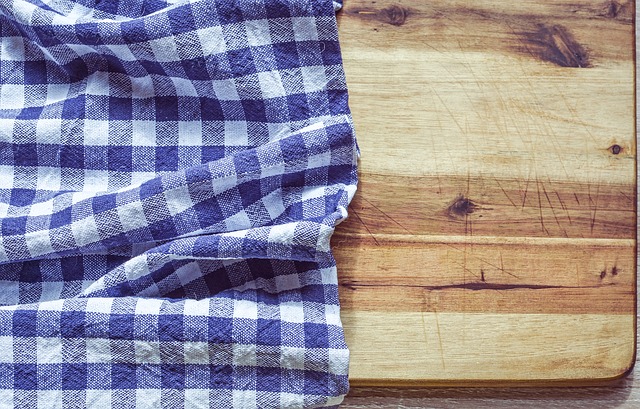Keeping solid wood worktops looking as good as new ones requires meticulous cleaning and maintenance. It is how to clean butcher-block surfaces to remove stains properly.
Butcher-block wood countertops are ideal for bringing warmth to a kitchen and are highly durable, making them one of the most beautiful kitchen worktops available. However, because they are composed of a natural substance, it is critical to properly understand how to clean them to keep them in good condition.
Table of Contents
How To Clean Butcher Block Kitchen Counters?
You can easily clean hardwood worktops using dish soap and a few natural stain removers such as white vinegar and lemon. Then it’s simply a matter of proper and conscientious upkeep.
From everyday cleaning to deep cleaning and stain removal on hardwood surfaces, follow our suggestions to keep your kitchen’s crowning glory looking new for years to come.
Simple cleaning is as simple as caring for your wooden butcher-block surfaces daily with dish soap and water. To perform a thorough cleaning, you’ll want to:
- Scrape away any stuck-on food and wipe away crumbs.
- Scrub at stains: Next, combine some hot water and dish soap and begin working on any stains with the rough side of a sponge. Wipe away any residue.
- Sanitize: If the area is now visibly clean and (nearly) stain-free, sanitize it by liberally spraying white vinegar. Allow a few minutes more, and then scrub off again. Additionally, this will assist with damp places and stains that are difficult to remove.
- Thoroughly dry: This step is critical to completing the cleaning procedure and protecting your wooden surface from warping or splitting.
Stains On Butcher-Block Countertops – How To Remove Them?
If vinegar cannot remove the stain from your countertop altogether, lemon juice is an excellent and natural solution to clean and lighten dark stains on butcher-block countertops. Apply half a lemon straight over the surface stain, soak steel wool in lemon juice and scrub until the stain disappears.
To increase the potency, combine lemon juice, 1 cup warm water, and one teaspoon hydrogen peroxide in a solution. Using a cotton swab, dab the stain with the solution and wipe clean.
How Should Wood Countertops Be Cared For?
- Location: If installing a hardwood worktop over a dishwasher, washing machine, or any other device that generates excessive heat or moisture, protect the natural material by putting a moisture barrier to the underside of the surface.
- Intelligent storage: If your butcher’s blocks are not immediately installed, store them horizontally with batons separating each workbench to allow air to circulate over the surfaces and to avoid warping, splitting, or bowing.
- Heat protection: If your workbench is adjacent to a freestanding oven, leave a 30mm gap between it and the appliance and add an endcap to the end of the worktop closest to the oven to protect the end grain from excessive heat.
- Oil after installation: Once the countertops are placed, should use the second coat of oil to seal the surface should be done every six to eight weeks to keep the wood in pristine condition. You can determine whether it is suitably lubricated by spraying a tiny amount of water over the worktop. If it pools rather than creating beads or drops, another oil application will likely be required.
How To Care For Wooden Workstations?
To maintain the appearance of your wooden worktops:
- Quickly mop up spills, particularly water: Mop up any spills immediately to avoid water streaks and other stains accumulating on the wood. If watermarks do appear, sand the area and re-oil.
- Go (partially) natural: Avoid using conventional kitchen cleaning chemicals on your work surfaces, as they may discolor the wood. Add a few drops of vinegar or lemon juice to your cleaning solution as described above to remove stubborn stains.
- Reapply oil regularly to keep your wooden worktop in good condition.
- Take care with heat: Avoid placing hot pots or trays directly on the worktop, as this may cause the surface to burn or discolor. Include a set of hotrods on your hardwood worktop to keep hot cookware away from the solid wood surface.
- Caution with food preparation: If your surface is not a butchers-block, avoid slicing food directly on it to prevent leaving marks. Rather than that, opt for a hardwood chopping board that can be readily sanded and re-oiled when necessary.
Why Do Butcher Block Countertops Get Dirty?
Step 1: Scrape away the last of the food.
A bench or dough scraper can be used to remove food that has been stuck to a butcher block surface. Spatulas work quite well in its place.
Step 2: Wipe the Surface
After scraping away the stuck-on food, wash the surface clean with a sponge or towel dampened with water and a mild dish soap such as Seventh Generation.
Step 3: Eliminate Stains
Remove stains by softly sanding the damaged area with a fine-grit sandpaper.
Step 4: Sanitize
Despite the fact that wood is inherently antimicrobial, a butcher block countertop should still be disinfected. Then wipe it clean with a moist cloth after spraying it with a vinegar-and-water solution. Allow it to soak for a few minutes.
Step 5: Apply oil
When the wood begins to dry out (when moisture begins to permeate the wood), cover the clean, dry surface with a coat of food-safe butcher block oil. Until the surface is completely dry, apply as many coats as necessary.


